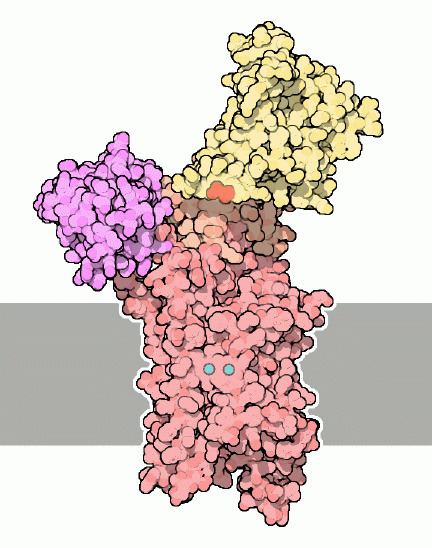EC number 3.6.3.8 | ExPASy NiceZyme view MetaCyc | |
 | ||
Ca2+ ATPase is a form of P-ATPase that transfers calcium after a muscle has contracted. The two kinds of calcium ATPase are:
Contents
Plasma membrane Ca2+ ATPase (PMCA)
The plasma membrane Ca2+ ATPase (PMCA) is a transport protein in the plasma membrane of cells that serves to remove calcium (Ca2+) from the cell. It is vital for regulating the amount of Ca2+ within cells. In fact, the PMCA is involved in removing Ca2+ from all eukaryotic cells. There is a very large transmembrane electrochemical gradient of Ca2+ driving the entry of the ion into cells, yet it is very important for cells to maintain low concentrations of Ca2+ for proper cell signalling; thus it is necessary for the cell to employ ion pumps to remove the Ca2+. The PMCA and the sodium calcium exchanger (NCX) are together the main regulators of intracellular Ca2+ concentrations. Since it transports Ca2+ into the extracellular space, the PMCA is also an important regulator of the calcium concentration in the extracellular space.
The PMCA belongs to a family of P-type primary ion transport ATPases that form an aspartyl phosphate intermediate.
The PMCA is expressed in a variety of tissues, including the brain.
Sarcoplasmic reticulum Ca2+ ATPase (SERCA)
SERCA resides in the sarcoplasmic reticulum (SR) within muscle cells. It is a Ca2+ ATPase that transfers Ca2+ from the cytosol of the cell to the lumen of the SR at the expense of ATP hydrolysis during muscle relaxation.
